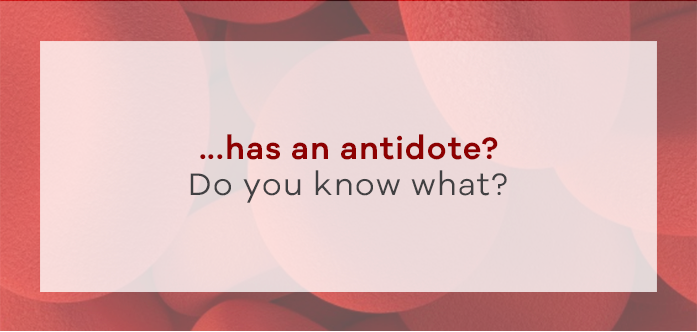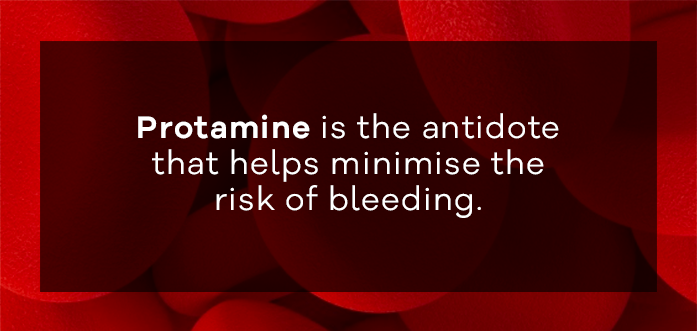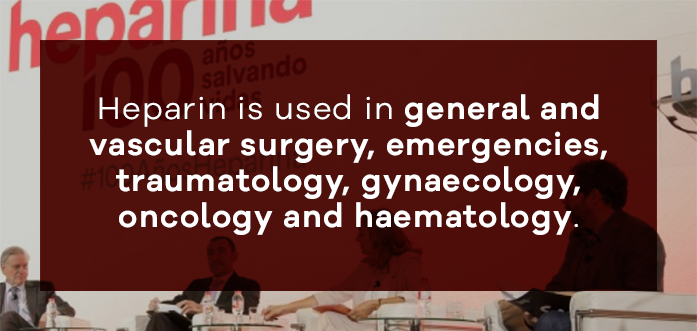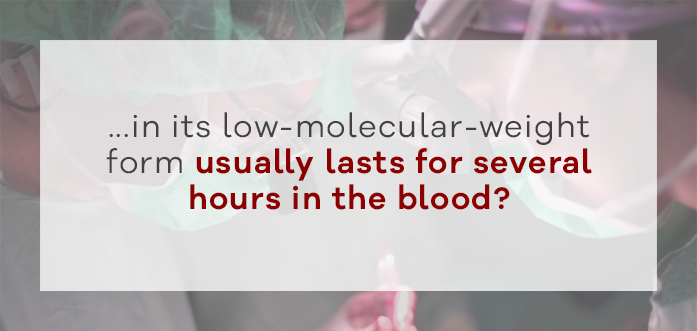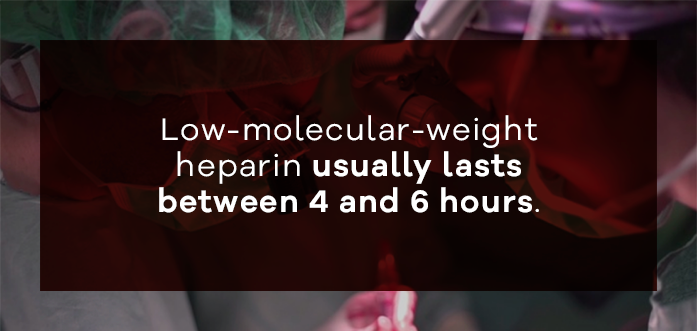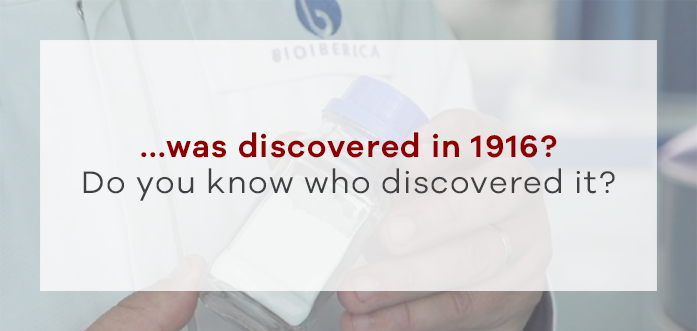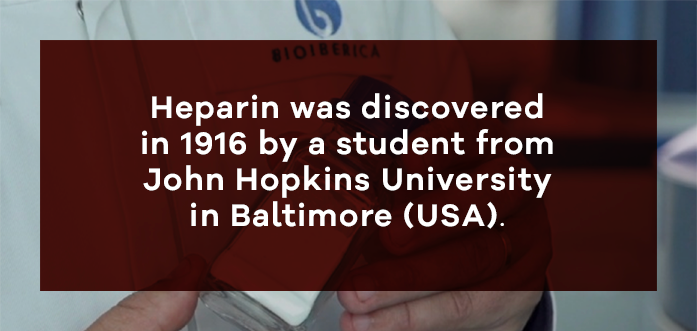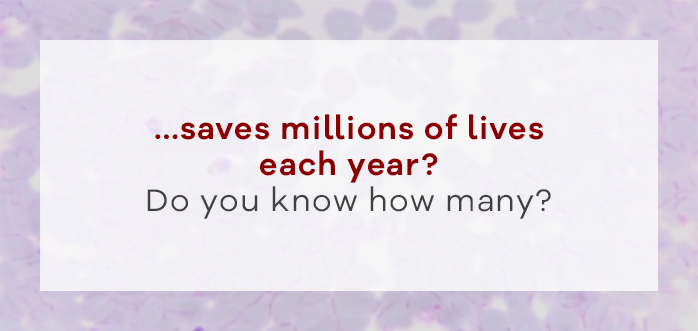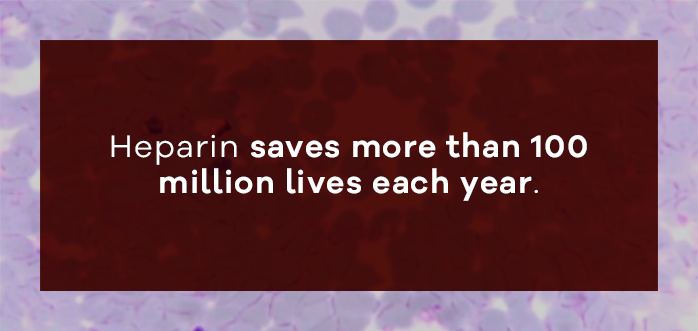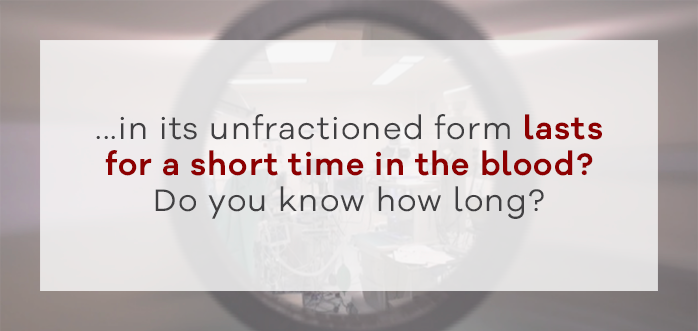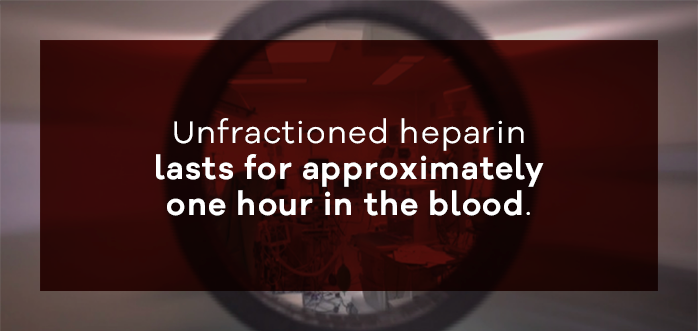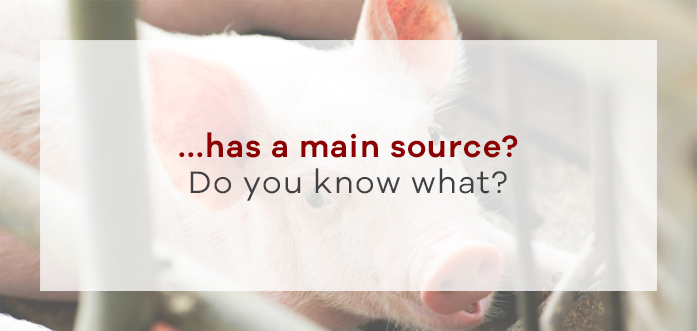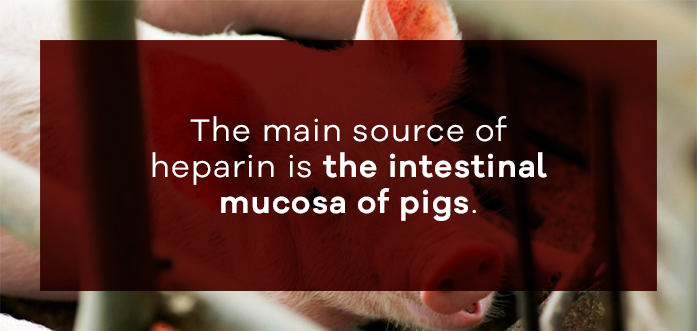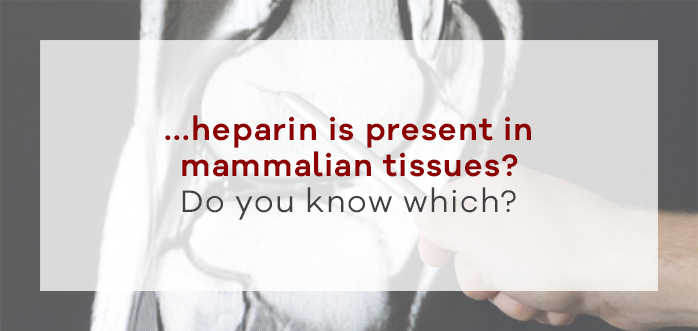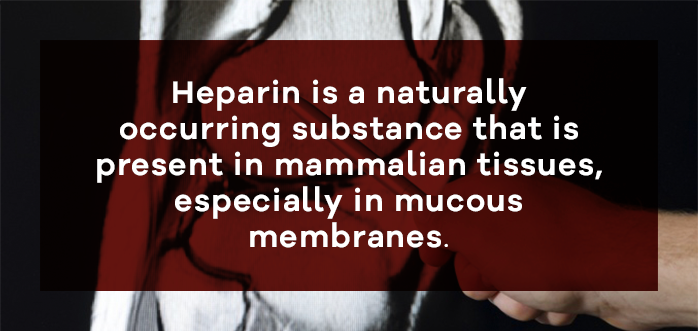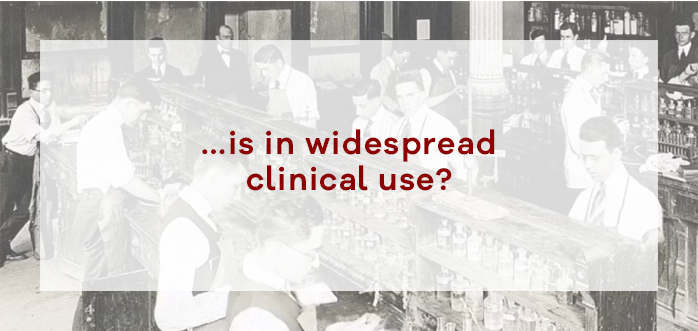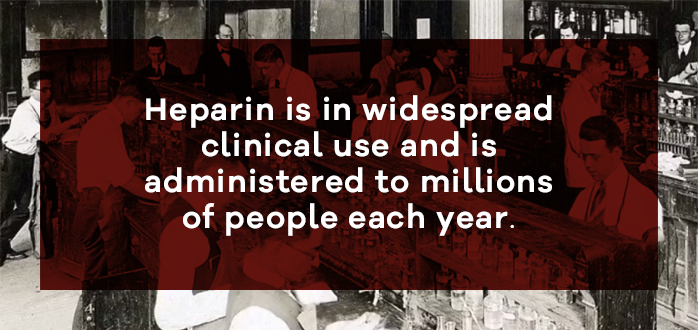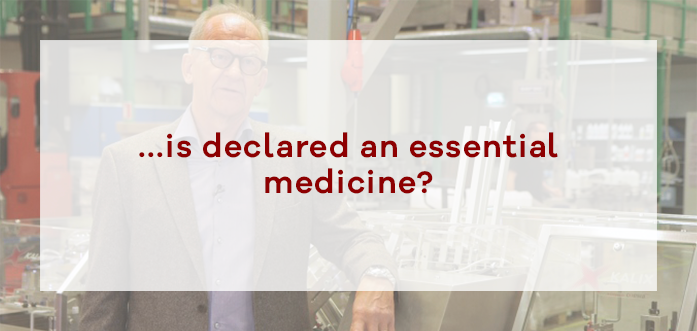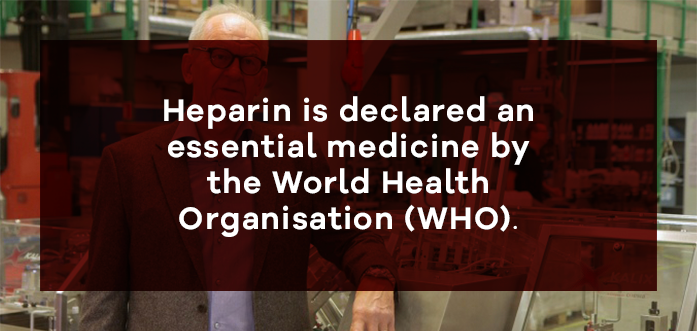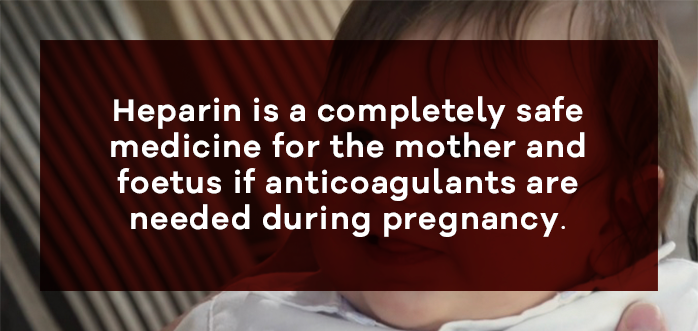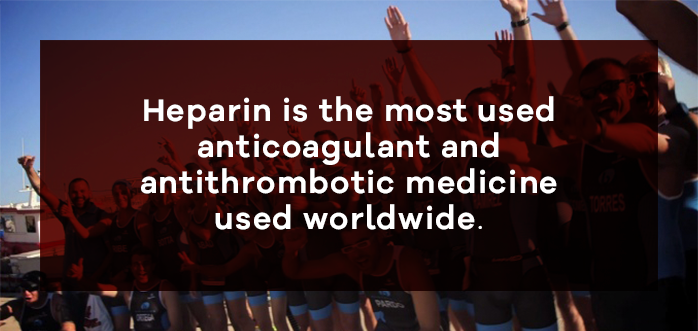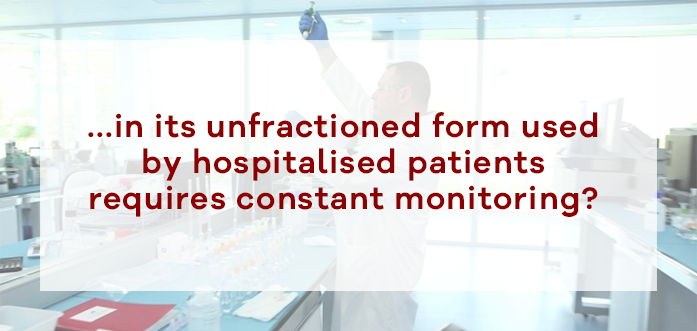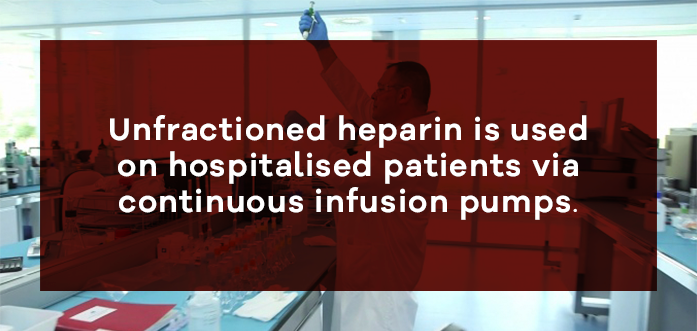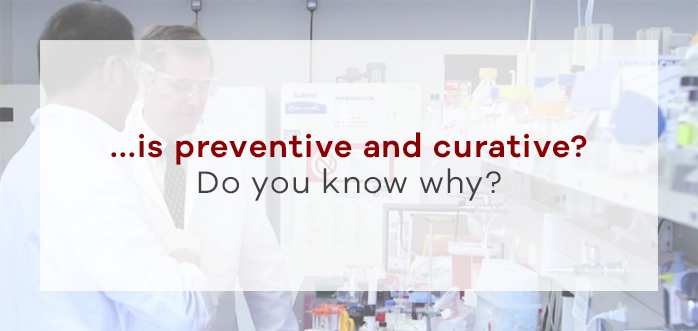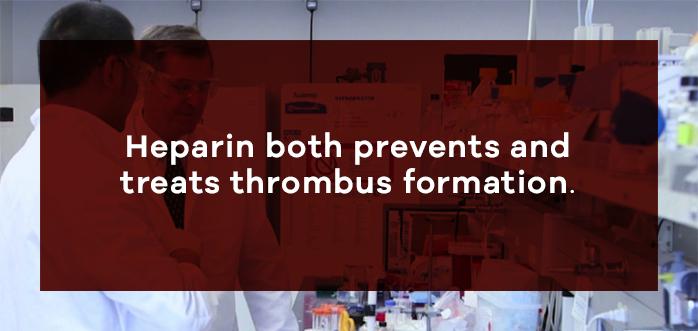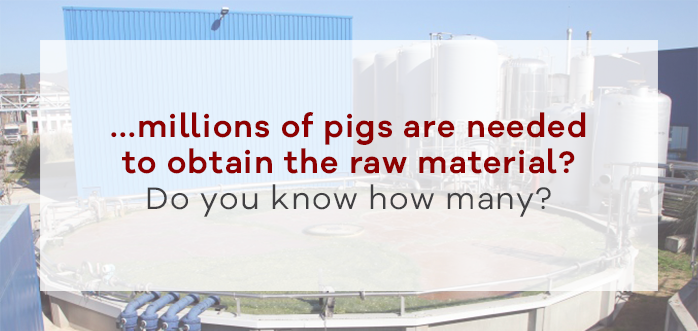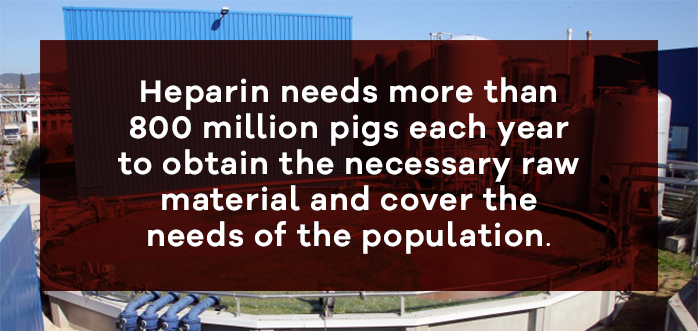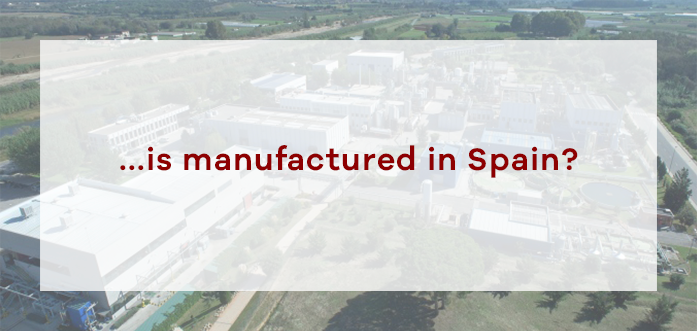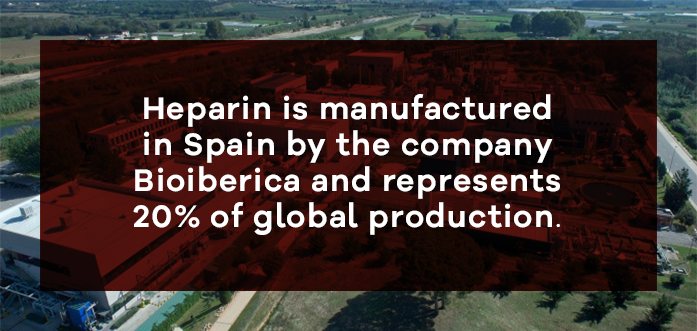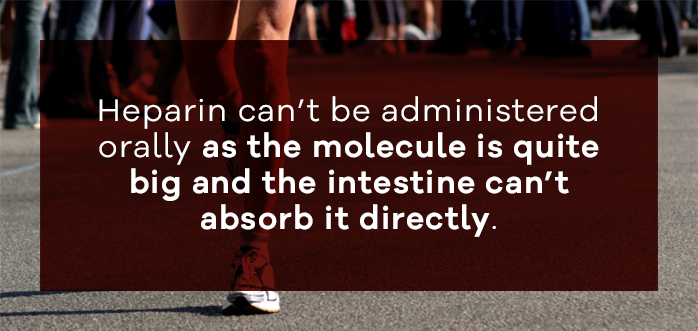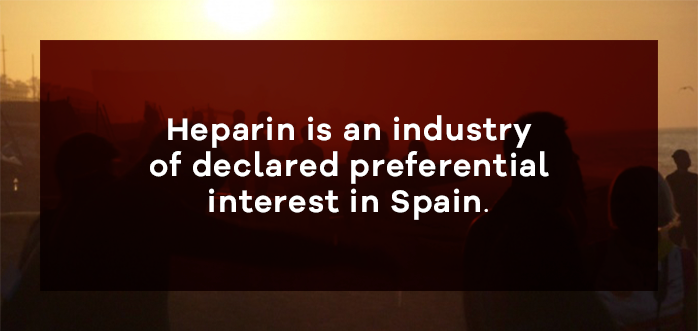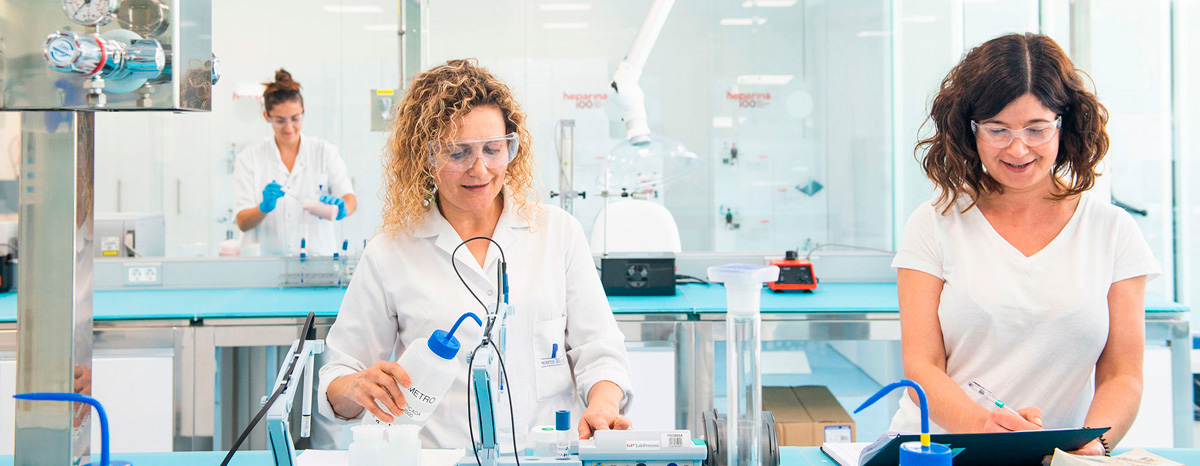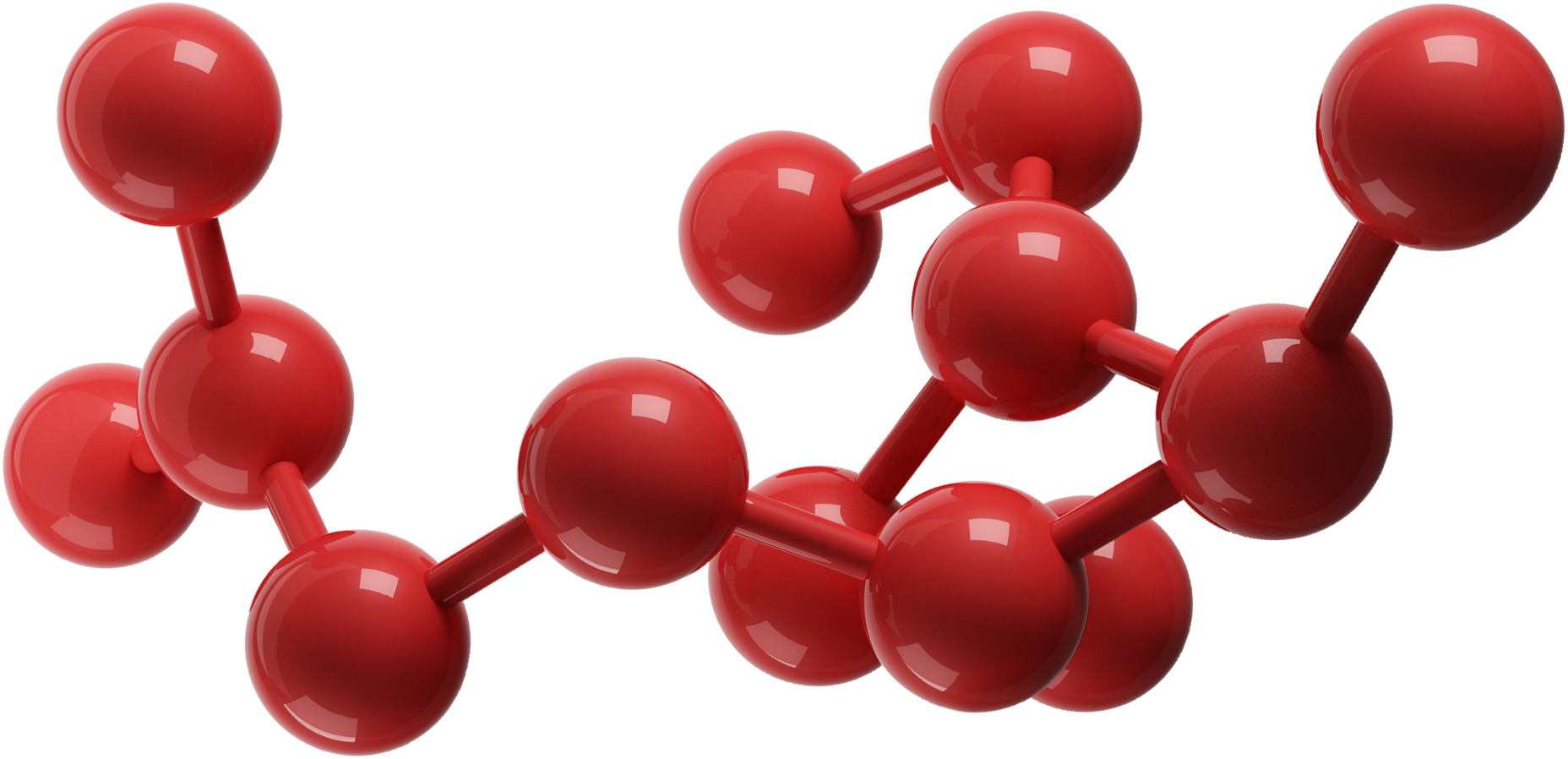
A MOLECULE THAT SAVES LIVES
Heparin is a highly-sulfated glycosaminoglycan, a natural substance composed of several molecules with properties that inhibit blood clotting. As a result of these characteristics, heparin is the most used anticoagulant and anti-thrombotic drug worldwide.
Heparin is a natural polysaccharide that contains a large number of linear and polydisperse chains. The molecular weight of natural heparin can vary from 3,000 to 30,000 Daltons (Da), whilst the average molecular weight of pharmaceutical-grade heparin is from 15 to 19,000 Da. Heparin chains are composed of long, fully-sulfated segments with interspersed low sulfated domains.
It is the medicine
anticoagulant and antithrombotic
most used in the world
UNFRACTIONED HEPARIN AND LOW-MOLECULAR-WEIGHT HEPARIN
There are two types of heparin as anticoagulants: heparin sodium or unfractioned heparin (UFH) and fractioned heparin, also called low-molecular-weight heparin (LMWH)
UFH is for hospital use and is mainly used intravenously.
LMWH, thanks to their lower non-hemorrhagic side effects, can be used for both hospital use as well as for intramuscular self-administration. These heparins have been replacing unfractioned heparins and have become the first choice anticoagulants for the prevention and treatment of venous thrombosis.
LMWHs are obtained through various methods of chemical and enzymatic depolymerization from pharmaceutical-grade UFH.
Each depolymerization method results in different LMWHs. Each one has a distinct and specific fingerprint due to their differences in chemical structure and molecular weight profile.
Typically, LMWHs have an average molecular weight between 3,000 and 7,000 Da. Unlike unfractioned heparin, LMWH chains are too small to form a ternary complex with thrombin and antithrombin. Consequently, they exert their anticoagulant activity through the inhibition of factor Xa.
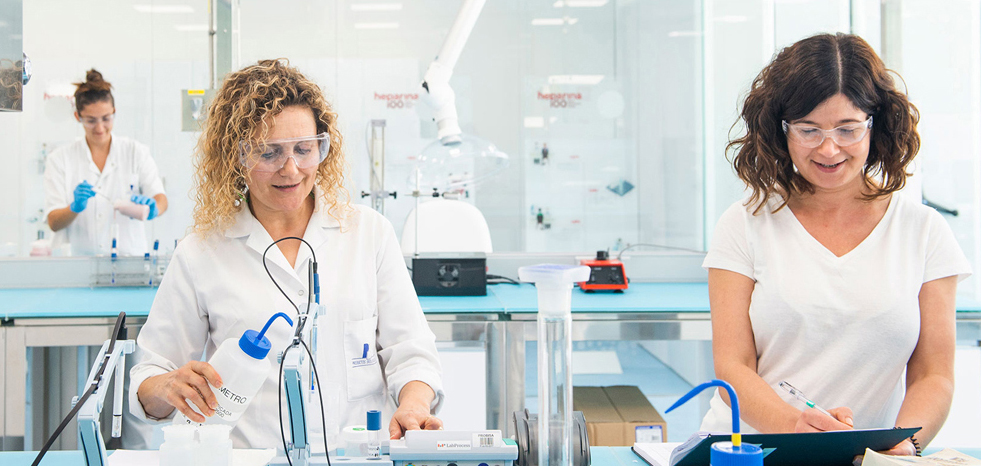
The advantages of LMWH over unfractioned heparin are:
• Better bioavailability: this type of heparin doesn’t bind to proteins or endothelial cells, nor is it neutralized by plasma proteins. Therefore, the complete dosage performs the anticoagulant function.
• A more predictable dose-response. There is no need to monitor or adjust the dose during its administration.
• Its plasma half-life is longer than that of unfractioned heparin, meaning it can be administered subcutaneously once or twice a day.
MECHANISM OF ACTION
Heparin is a natural substance that acts by interacting with the blood’s coagulation cascade and helps the blood anticoagulation process. It mainly acts on thrombin which plays an important role in blood clot formation. Classic heparin exerts its anticoagulant effect by accelerating the formation of molecular complexes between antithrombin III and factors II (prothrombin), IX, X, XI and XII which are inactivated.
Author: Martin Wardle
AN ESSENTIAL MEDICINE
Heparin can interact and regulate the activities of a wide range of proteins that are essential for important biological processes such as:
Heparin can interact
and regulate the activities of
a wide range of proteins
The general medical uses of heparin are the following:
However, the potential of the heparin molecule and its derivatives for the development of new drugs is huge. Heparin activity is being studied in the treatment of cancer, malaria, chronic obstructive pulmonary disease (COPD), organ transplantation, arthritis, cystic fibrosis, asthma or pulmonary emphysema, amongst others.
DID YOU KNOW THAT HEPARIN…
